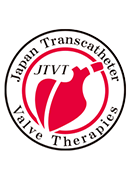Background: Although transcatheter aortic valve implantation (TAVI) has been developed as a less invasive treatment for patients with high surgical risk, the utility for nonagenarians has not been fully validated due to limited data on survival outcomes. This study reports the outcomes of TAVI performed in a cohort of nonagenarians.
Methods: Between August 2009 and February 2017, 440 patients underwent TAVI in our institution. Of these, 46 (10%) were ≥90 years of age. Baseline characteristics, procedural details, and outcomes were prospectively entered into a dedicated database. Transthoracic echocardiography and clinical follow-up were performed before the procedure, at discharge, at 6 and 12 months, and then annually after TAVI.
Results: The mean age of patients was 91.7 ± 1.8 years, and 41% were male patients. Mean logistic European System for Cardiac Operative Risk Evaluation and Society of Thoracic Surgeons scores and Clinical Frailty Scale score were 28.3 ± 15.6%, 12.0 ± 5.9%, and 4.12 ± 0.95, respectively. At 30 days, the disabling stroke rate was 2.2%, the life-threatening bleeding rate was 2.2%, and the pacemaker implantation rate was 6.5%. The rates of all-cause mortality were 0% at 30 days, and 9% at 1 year, 21% at 3 years, and 45% at 5 years.
Conclusion: Long-term results of TAVI for a carefully selected population of nonagenarians were satisfactory. TAVI may be a reasonable therapeutic option in some nonagenarian patients.
抄録全体を表示
